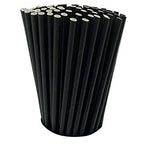You have no items in your shopping cart.
Welcome to our exciting exploration of things that fly! In this article, we'll delve into the diverse realm of aerial wonders and discover some extraordinary creatures and objects that take to the skies. From magnificent birds and nimble insects to incredible man-made flying machines, we'll uncover the marvels of flight. So fasten your seatbelts (or wings) and let's soar into the captivating world of aerial adventures!
Name Something That Flies: Birds, Nature's Aviators
Birds are perhaps the most well-known and beloved creatures that possess the remarkable ability to fly. With their hollow bones, streamlined bodies, and feathers designed for flight, these avian marvels effortlessly navigate the skies. Let's take a closer look at some remarkable birds:
1. Bald Eagle
The bald eagle, known as the national bird and symbol of the United States, is a majestic raptor that soars through the air with grace and power. With a wingspan of up to 7 feet (2.1 meters) and keen eyesight, it is a master of the skies, known for its incredible hunting prowess.
2. Ruby-Throated Hummingbird
The ruby-throated hummingbird is a tiny yet astonishingly agile bird. Weighing only a few grams, this jewel-toned creature can hover mid-air, fly backward, and beat its wings up to 80 times per second. Its ability to fly in all directions with remarkable precision makes it a true marvel of flight.
3. Albatross
The albatross is a seabird that possesses one of the largest wingspans of any living bird, reaching up to 11 feet (3.4 meters). These magnificent creatures can travel vast distances without landing, using the power of wind currents to glide effortlessly for thousands of miles.
4. Peregrine Falcon
Known for its incredible speed during hunting dives, the peregrine falcon is the fastest bird in the world. It can reach speeds of over 240 miles per hour (386 kilometers per hour) while stooping down to catch its prey mid-flight. With such astonishing velocity, the peregrine falcon is the epitome of avian agility.
5. Andean Condor
The Andean condor, found in the mountainous regions of South America, is one of the heaviest flying birds. With a wingspan of up to 10.5 feet (3.2 meters) and weighing up to 33 pounds (15 kilograms), this magnificent creature gracefully soars through the high altitudes, using thermals to maintain flight.
Buzzing Wings: Insects Take Flight
While birds dominate the skies, they aren't the only creatures that can fly. Insects, with their delicate wings and nimble bodies, demonstrate extraordinary aerial capabilities. Let's explore some fascinating flying insects:
6. Monarch Butterfly
The monarch butterfly is renowned for its epic migration spanning thousands of miles. These delicate creatures embark on a remarkable journey, flying from Canada and the United States to central Mexico, and back again. The intricate patterns on their wings and their graceful flight make them a sight to behold.
7. Dragonfly
With their vibrant colors and intricate wings, dragonflies are fascinating aerial acrobats. These ancient insects can hover, fly backward, and change direction instantly, showcasing their incredible agility and control. Their large compound eyes provide excellent vision, enabling them to catch prey on the wing with remarkable precision.
8. Bumblebee
Despite their portly appearance, bumblebees are proficient flyers. Their large wings beat at a high frequency, allowing them to hover effortlessly while gathering nectar. Bumblebees are vital pollinators, contributing to the reproduction of numerous flowering plants and playing a crucial role in maintaining ecosystems.
9. Luna Moth
The luna moth is a stunning creature that emerges from its cocoon with vibrant green wings, delicately adorned with long, sweeping tails. Although their adult lifespan is brief, these nocturnal beauties showcase their graceful flight during the twilight hours, captivating those fortunate enough to witness their ethereal dance.
10. Orchid Bee
Known for their brilliant metallic colors, orchid bees are expert fliers that play an essential role in pollinating orchids. Their long tongues allow them to access nectar from deep within the flowers, and they are known for their precision and speed as they dart from one blossom to another.
Soaring Machines: Man-Made Flying Wonders
In addition to the natural world, humans have also invented various machines that defy gravity and take to the skies. These incredible feats of engineering have revolutionized transportation and expanded our horizons. Let's explore some noteworthy man-made flying wonders:
11. Boeing 747
The Boeing 747, often referred to as the "Jumbo Jet," revolutionized air travel when it first took flight in 1969. With its distinctive hump-shaped upper deck and immense size, this iconic aircraft opened up new possibilities for long-distance travel, carrying passengers and cargo across continents and oceans.
12. Space Shuttle
The space shuttle was a groundbreaking spacecraft designed for orbital missions and space exploration. It was capable of launching into space like a rocket and landing like an airplane, making it a versatile and reusable vehicle. The space shuttle program significantly advanced our understanding of space and facilitated the construction of the International Space Station.
13. Hot Air Balloon
Rising gently into the sky with the aid of heated air, hot air balloons offer a serene and captivating flight experience. Since their invention in the late 18th century, these colorful giants have become a symbol of adventure and a popular means of aerial exploration, offering breathtaking views from high above the ground.
14. Wright Flyer
The Wright Flyer, built by the Wright brothers in 1903, is recognized as the world's first successful powered aircraft. With its biplane design and a 12 horsepower engine, this historic flying machine achieved controlled, sustained flight and forever changed the course of aviation history.
15. Harrier Jump Jet
The Harrier Jump Jet, developed by British aerospace company Hawker Siddeley in the 1960s, is a marvel of engineering. Its unique ability to take off and land vertically, as well as hover in mid-air, allows it to operate from small, unprepared landing sites. The Harrier's vertical takeoff and landing capability have been crucial for military operations.
Frequently Asked Questions (FAQs)
FAQ 1: Do all birds fly?
No, not all birds are capable of sustained flight. Flightless birds, such as ostriches, emus, and penguins, have adapted to terrestrial or aquatic lifestyles and have either lost the ability to fly or have limited flight capabilities.
FAQ 2: How do birds fly?
Birds fly by generating lift through the motion of their wings. By flapping their wings and manipulating the shape and angle of the wing surface, birds create airflow patterns that generate lift and allow them to overcome gravity and remain airborne.
FAQ 3: Can insects fly backwards?
Yes, certain insects, such as dragonflies and hummingbirds, are capable of flying backward. Their wings move in a figure-eight motion, enabling them to hover, change direction, and even fly in reverse.
FAQ 4: What is the fastest bird in level flight?
The common swift holds the record for the fastest bird in level flight. It can reach speeds of up to 69 miles per hour (111 kilometers per hour) during its migration flights.
FAQ 5: How do airplanes stay in the air?
Airplanes generate lift by the shape of their wings and the forward motion created by their engines. The curved shape of the wings creates a pressure difference, with lower pressure above the wing and higher pressure below. This pressure difference generates lift, allowing the airplane to stay aloft.
FAQ 6: Are helicopters considered flying objects?
Yes, helicopters are considered flying objects. They are rotorcraft that generate lift and propulsion through the rotation of one or more horizontal rotors. Helicopters can take off and land vertically, hover in place, and fly in various directions.
Conclusion
From the graceful birds soaring through the skies to the intricate flight maneuvers of insects and the incredible feats of human engineering, the world of flying is a testament to nature's wonders and human ingenuity. Whether it's the effortless glide of an albatross, the dazzling colors of a butterfly, or the roar of a jet engine, flight continues to captivate our imagination and push the boundaries of what is possible.
So next time you gaze up at the sky, take a moment to appreciate the extraordinary creatures and machines that conquer the air. Their ability to defy gravity and navigate the boundless expanse above reminds us of the limitless possibilities that exist when we reach for the skies.








